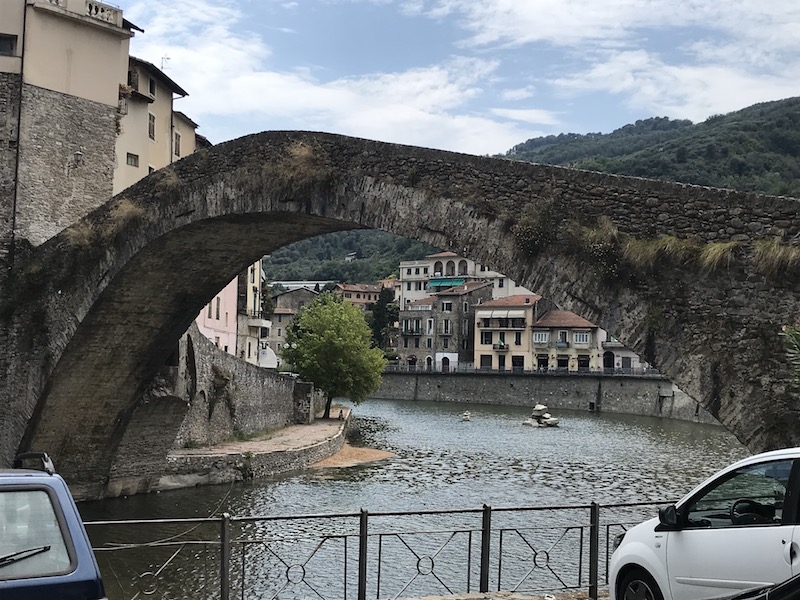Our Blog - Dolceacqua, Italy
Dolceacqua village is a few kilometers inland from the Mediterranean coast, in the Nervia valley at the western end of Liguria, very close to the border with France. It is known for the olives which are grown in abundance in the region, the locally grown flowers, and a decent red wine called Rossese produced from grapes grown in the surrounding hills (we bought a bit of wine). I thought the name came come "Dolce" = sweet and "Aqua" = water ... but NO. The name Dolceacqua almost certainly derives from the presence of a farmhouse from Roman times belonging to Dulcius, later transformed into Dulciàca, Dusaiga (the current dialect name) and Dulcisaqua.
The old part of the village is accessible by crossing a 33-meter-long humpbacked medieval bridge, Ponte Vecchio, built in the 15th century. The span of the bridge is quite large, which required such a dramatic 'hump'. In 1884, Monet (the artist, who came to paint in this area of Italy) wrote "the place is magnificent, there is a bridge that is a jewel of lightness". Lucy was very happy to be there.



The old part of the town is very much still a medieval town ... tall ancient houses, small courtyards, steep alleys and vaulted passages.






This is an interesting road, Vicolo Cassini, which is a typical road whose houses are joined by numerous supporting arches.

Already present in a much older period, the Chiesa di Sant'Antonio Abate was completely rebuilt in 1471, then underwent an expansion between 1860 and 1865 which brought the structure into the current Baroque and classic architectural forms. Inside, it is richly decorated with Baroque-period gold stucco. Lucy likes the fact that she can go into churches in Italy.



An this is our crazy puppy, rolling on the church floor.
Towering over the older part of Dolceacqua is a medieval castle, Castello Doria, with its facade and towers either side still continuing to dominate the village. The castle has been renovated in recent years. Doria castle, as it is known, has its origins in the 12th century, with substantial fortifications added in the 14th century and the castle being transformed into a more comfortable residence during the renaissance period. Damaged during fighting in the 18th century Wars of Succession and again by an earthquake in 1887, the abandoned castle is approached by the narrow, cobbled lanes that meander up between the medieval houses that cover the hillside. Unfortunately, it was closed when we were there but Lucy really wanted to go in.



